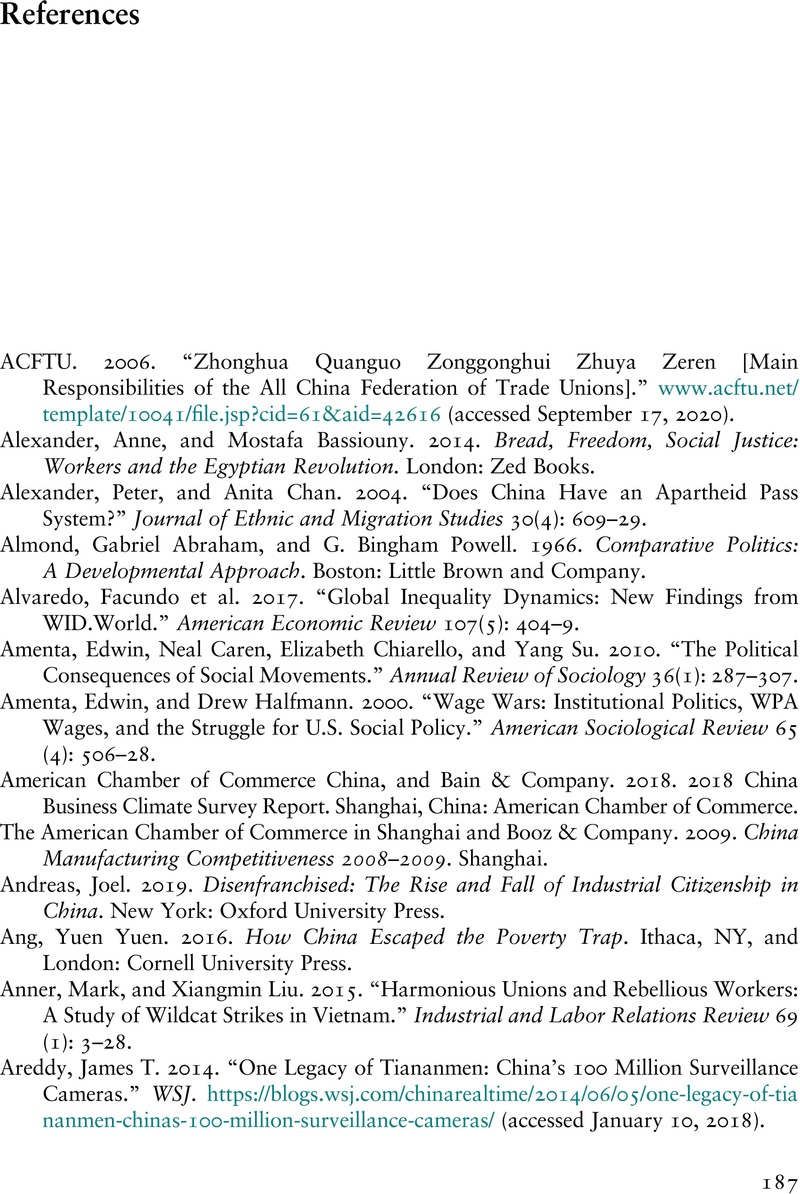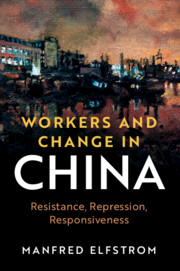Book contents
- Workers and Change in China
- Cambridge Studies in Contentious Politics
- Workers and Change in China
- Copyright page
- Dedication
- Contents
- Figures
- Maps
- Tables
- Acknowledgments
- 1 Introduction
- 2 Recipes for Resistance
- 3 Bureaucratic Incentives
- 4 Orthodox Control
- 5 Risk-Taking Control
- 6 Increased Repressive and Responsive Capacity
- 7 Bottom-Up versus Top-Down Change
- 8 Conclusion
- Appendices
- References
- Index
- Series page
- References
References
Published online by Cambridge University Press: 14 January 2021
- Workers and Change in China
- Cambridge Studies in Contentious Politics
- Workers and Change in China
- Copyright page
- Dedication
- Contents
- Figures
- Maps
- Tables
- Acknowledgments
- 1 Introduction
- 2 Recipes for Resistance
- 3 Bureaucratic Incentives
- 4 Orthodox Control
- 5 Risk-Taking Control
- 6 Increased Repressive and Responsive Capacity
- 7 Bottom-Up versus Top-Down Change
- 8 Conclusion
- Appendices
- References
- Index
- Series page
- References
Summary

- Type
- Chapter
- Information
- Workers and Change in ChinaResistance, Repression, Responsiveness, pp. 187 - 218Publisher: Cambridge University PressPrint publication year: 2021



